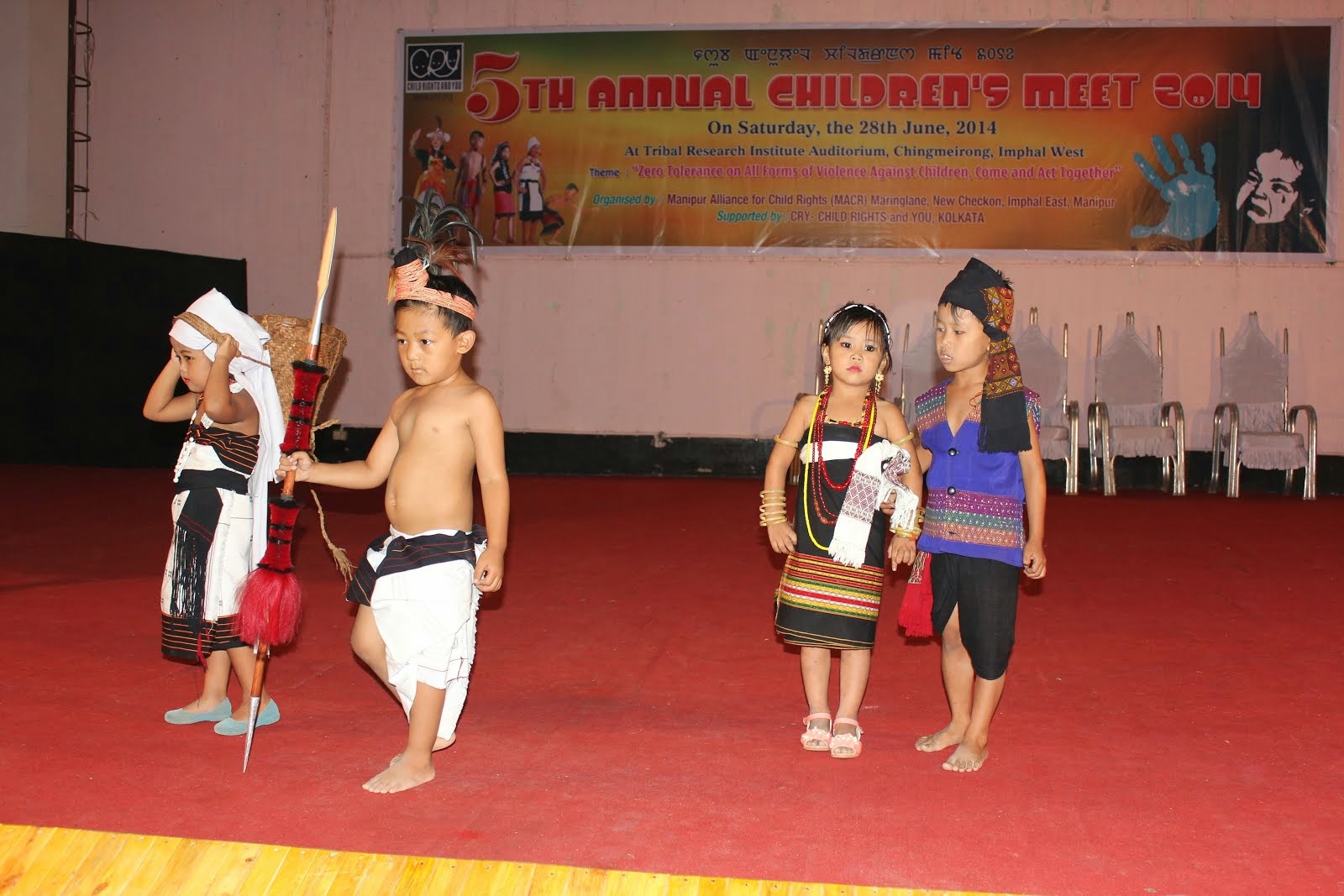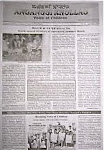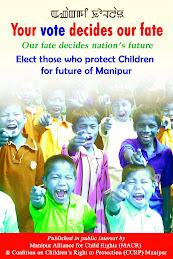By: Alex Akhup
Ms. Kimnei Salviana Leivon, Research Scholar, Tata Institute of Social Sciences, Mumbai 400088. Currently engaged in northeast studies, education, governance and tribes.
Reading through the “Human Development Report 2011; Towards Social Inclusion”, I was drawn upon my recent experience of the reality of village people in the state during my fieldwork engagement trip. What came uppermost in the mind as a researcher and a fellow villager during my fieldwork and holiday is the persisting reality of poverty as lived by people in the villages especially in the hill districts of the state. The common phrase ‘awabada awaba piju, nongaibada nungaiba piju’ (translate as ‘rich will grow richer and the poor will grow poorer’) is still sung loud and clear among the villages. It is evident that such areas are still far away from the reach of the state devepment processes. As for instance, the focus of the government in the 11th five year plan was inclusive growth and development. In fact, the human development report 2011 has rightly indicated improvement along such a planned development objectives. As for instance, it is reported that there is convergence of literacy rate across the ST, SC, Minorites and the national literacy rate. In fact most of the states in the northeast region show literacy rate above the national average and much higher when compared to other tribal areas in the region. This statistical status is also vividly endorsed by the latest “Economic Survey of Manipur” (2009-10). However, on a deeper analysis, it is noted that there is a critical data which reveals the persisting problem of poverty among STs, SCs and minorities confronting inclusive planned development process in the country. As seen in the report, malnutrition is still a matter of grave concern for the country when it comes to the context of poor people; SCs, STs and even minority. This situation is further endorsed in the data on infant mortality rate, low body mass (BMI less than 18.5), total fertility rate and unemployment (p. 6-15). It is a serious development and governance issue still persisting even after six decades of planned development activities in the country. Such a state of condition directly affects the most vulnerable and important sections of soceity; children and mothers among across SCs and STs. The data also directly highlights the outcome of the national schemes such as Integrated Child and Development (ICDS) and midday meal which are supposedly launched to support health and education for children and women (mothers).
Setting my foot upon the village habitations of the hill areas, I encountered a total absence of the planned development system; or rather a prominent presence of a non-state system of power and corruption. The people are held hostaged to such system and poverty is thus an inherent outcome, and it would only widen year by year. I was inclined to asked whether the emerging leaders both state and non-state really understand priorities of development. However, it seems everything in the region goes in the name of politics; nation-state, nationalism and ethnonationalism. They provide a theoretical explanation for the situation together with a strategy for a solution. In fact the state leaders boldly declare that ethnicity is a hindrance to development while taking advantage of such situation for party and individual power and prestige. It is observed that the situation has gone to such a level that today civility and citizenship are not known to the people. The rich, powerful and dominant have taken over state system. In fact, it seems that no state activity takes place without the CDOs (Manipur state commandos). Besides, there are numerous non-state organizations/individuals who claimed to be civil societies or national workers in perfect union with the system of rich and dominant. Such a system survives on the development funds for the people. It is a commonly known fact among people that ‘government contract work’ (mainly for the insfrastructure development including schemes for school buildings) is the main source of income for the non-state systems and individuals. This system is the emerging overarching state structure that define people and development. In short, local system is at the mercy of the larger system indicating a total absence of state system, democracy and governance. Thus inclusive growth and development as professed in the planned economy of the country suffers from lack of governance system in such a context. In a sense, welfare state system is absent in lived experience of the villagers that I visited in the hill districts. Such a situation confronts the theory that hill districts have tribal councils and village authorities as strong local bodies that would bring in good governance in the hill areas. In fact the Hill districts councils have just dawn their mantle upon the hill region since 2010; a system revived after a gap of twenty years and more but still very much conditioned by the larger structures above.
The absence of democracy and governance sytem in the state is expressed in persisting poverty, illiteracy, illhealth, backwardness rampant in the villages. As a researcher with a grounding on social theory and strategy for empowerment and development for people, the neglected situation of the villages is a matter that has confronted me beyond my understanding. Every year I go home or go for fieldwork, I see the same old huts of the village, thatched roof and mud floor. No electricity, no water, no road connectivity, no school building, no PHCs, the list is endless. Some of the worse situations are expressed in people going to fetch waters to the far away ponds and streams which often gets dried once the moonson rains had made their exit from the land. Road connection is the same as ever. Infact it has become worse as few tarred sprinkled stones have been dropped occassionally in the name of state insfrastructure development especially in the villages within the range of 20-30 kms from the main city. However, such roads in fact have become health hazards of the people due to the huge amount of dust generated along the roads. It is a common sight that people travelling along the roads are covered with dust allover. Health system is still absent and the government schools are still non functioing.
Reaching upon the village premises one comes to observed the golden rice fields in the foothills and also on the slopes of the mountains. These fields constitute the main occupation of the people. If one goes deeper in the processes of the occupation, it is seen that the manner of occupation has changed. Today, there is a trace of technology coming especially in the paddy fields of the plain area. One can observe the Kokoda, tractor and even few tractors with harvesting accessories. Such situation reveals that people with alteast two to four acres of cultivable land are moving towards modern methods of rice cultivation. This has generated fair amount of labour for landless. However, I observed that such emerging changes has become heavy financial burden to the people. In fact for cultivation of one pare (2 and ½ acres), one has to spent approximately about forty to fifty thousand rupees. This would be spent in buying manure and hiring tractor or labour for ploughing and harvesting. This implies that land owners are caught in increasing financial burden which is expressed in the number of children and students dropping from school and colleges. Those who are able to afford had to earn for education from other sources of income. Such earning comes mainly from selling vegetables, fruits and jungle products. Some individuals of the families who are employed are quite comfortable. They are in fact able to the have house amenities such as two wheelers, TVs and even mobile phone (new thing in the village). However, in general, poverty is slowly but firmly taking a grip of the villages.
In all of these, what becomes most worrying is children’s growth and development and education. It is observed that education, primary education (elementary education) is the most important activity of every family, village, state and country. There is a realization that education is the only means to become rich and raise the family income status even among remote villages. But it is observed that in general the primary education system has been the domain of private schools implying financial burden. Such a situation also indicates a faulty strategy of the state plan. In fact, it can be inferred that the minimal focus of the government plan on the primary elementary education especially before the 1990s has deeply affected the mentality of the people. It is observed that today inspite of the new policy focus given on the elementary education since the 2001, common people still don’t have faith on the state system, the government schools. Such condition befits a critical analysis against the present economic survey data (p.157-165). As matter of fact, lately Manipur was conferred “Best Improved State in Governance Among Small States of India” during Chief Minister Conclave held on November 4th in New Delhi, 2011 (http://theshillongtimes.com/2011/11/19development-in-manipur%E2%80%99). This is rightly so as seen in the well established information system of the state particularly managed by the state national information centre. As for instance, the web portals of Rastriya Madhyamik Siksha Abhiyan (RMSA) and Sarva Shiksha Abhiyan (SSA) Manipur indicate good governance structure with accountability and transperancy of the implimentation of the schemes.
However, as experienced in the lived reality of villages in the hill areas of the state, one cannot rely everything on the e governance system of the government to a certain level. In reality it is observed that the system of education, as positioned in the Right to Education (RTE) is still vacant indicating that RTE cannot be implimented in the hill areas. Supposedly, Manipur state is one of the states which has taken proactive stance towards RTE and Right to Information (RTI). The SSA data Manipur section indicates that the state has made tremendous improvment on the elementary education front. However, in reality there is an existence of a complex structure and network of the bureaucratic structure, the local powerful chiefs, local leaders, the rich and the under ground organizations. In such a context the recent policy brought in Manipur and the recruitement of the graduate teachers will have little effect. As for instance, the local bodies in article no. 9 of the Right to Education Act (RTE) and the commission for the child right although laid down in the rules to RTE still is not able to function at the local level. When it comes to infrastructure development of schools, School Management and Development Committee (SMDC), a committee of fourteen members, as policy has been formed. However, at the ground reality, SMDC is functioning without a proper system support. What is most worrying to this system is the position of the Chairman and Secretary of the committee in whose names the school bank account is to be opened. In practice, Chairman is in fact the local disbursement officer at the school level. As a rule the school headmistress/headmaster is the chairman. He/she becomes directly accountable to the financial transactions, accountability and transparency under RTI. The secretary is to be appointed by the committee representing the parents. These office positions have come under criticism from the tribal chiefs in many villages as they would like to be a defacto local disbursement officers at the village level. Over and above all these, the chairman and secretary are responsible to the local leaders and the undergrounds who also demand a share of the fund coming for the infrastructure development of village schools. In fact of-the-record, it has been observed that atleast 50% of the fund goes to the bureaucratic offices of the education system, local leaders and underground groups. As observed, in the scheme for one room school building construction under SSA, one headmaster/headmistress of a village returned the money to the ZEO due to the pressure of demand coming from outside orgaizations. Many schools are being constructed with low quality. As such, the school committee especially the chairman and secretary have become victim of the larger system. Suspension of headmaster/headmistress of schools is likely to come if monitoring system comes into practice.
Besides, there is a grave system problem in education at the level of the primary and elementary education system in the hill region. As a policy, elementary education (class I-VIII) is the focus of the state. However, this becomes critical when one is looking at the local bodies for the implimentation of the schemes in the hill districts. As for instance, the district council, now in function has the primary role of primary education in the hill districts. The people usually know it as ‘council schools’. The ZEO in the hill districts looks after the the education system above class five. But in the recent times, a focus has been made on RTE covering elementary education; free and compulsory education between the age of 6-14 (class- 1-VIII). The SSA schemes is basically handled by the ZEO and runs across all villages and schools in the hill region. Therefore, ZEO has become more active in the RTE process in the hill areas covering the council schools. Such an emerging system creates a confrontation of systems within in the hill areas; between council system and the zonal system. The system interface (between state system and local system) has not been spelt out in policy as well as in practice at present.
It has become obvious that if the system of education has to be laid effectively, it is imperative that education has to be declared a ‘free zone’ (free from politics, corruption and financial demands by undergrounds); allow the system to work. Education for children is one of the most fundamental right which the state is still not in a position to give to the children even with the policy laid. This can be inferred from the number of children enrolled in governement schools. Many schools are non functioning due to non enrolment of children inspite of incentives (supply of free text books,school uniforms and midday meal) coming from the government, development of infrastructure and appointment of graduate teachers to the elementary schools especially of the hill districts. Parents opt mainly for private schools. Good schooling is considered to be enrolment in the private schools. This implies a heavy cost for the children education at the family level. Some parents who are able to afford send their children to private schools in the main city. It implies that the child has to rent an accommodation or stay in a private hostel. As a matter of fact, most of the income of the parents go in school education for their children. In such a condition, it is further observed that the parents through hard labour are able to support the child to go to private schools but slowly declined to financial problem. As year go by their ability to earn and support the children also decline. At the same time, the cost of education increases persistently. In such a situation the child definitely has a glim chance to go for higher studies. Most of the time the child drops out after the elementary education. Back to squire one. Based on the above observation, it can be inferred that only parents with some constant income source are able to support their child upto the completion of the higher studies. In fact, for those who are able, outside colleges are preferred due to the political situation that effects the education process along with the push-pull factor of employment. Therefore, socio-political and economic situations are an intrinsic part of the society triggering a divide between the rich and the poor, middle class and the poor.
As a logical conclusion to this article, I recommend that education sector due to its critical component be declared a ‘free zone’ by all government, civil societies, organizations, villages and people in the hill areas. Considering the situation at present, it is presumed that only an environment of politics free, corruption free and ‘non demand’ policy (inclusive of non-demand by all groups such as so called underground, political leaders and bureaucates) on financial investment coming to ‘right to education’ will allow implimentation of right to education in the hill areas. This would bring in an environment for change; of faith and hope on the government schools at the elementary level; proper running of the governent schools in the hill area. If elementary education, ‘free and compulsory’ (Constitution articles no. 21(A) and Right to Education Act, 2001) is implimented financial burden on the education for children at the elementary education would decline. This would definitely unleased financial capacities of families and villages towards progress and development. However, the task at hand would go unheed without the cooperation of the people; the bureaucrats, teachers, parents, students, contractors and undergrounds. It is opined that this article would provide an idea for the young generations, people, institutions, local bodies and organizations such as student organizations so that people of all sections or ethnic groups of the state would reap the fruits of democracy and good governance, and create space for progressive politics of development, growth and prosperity.


















